The world of eCommerce continues to evolve rapidly, and one of the most transformative systems to emerge in recent years is Fulfilment by Amazon (FBA). This model has enabled countless entrepreneurs, retailers, and brand owners to reach millions of customers while outsourcing the most complex part of their operation—order fulfilment. But how does Amazon FBA actually work? And more importantly, is it the right model for your business in 2025?
This guide is designed to demystify Amazon FBA for beginners, growing sellers, and businesses evaluating third-party logistics (3PL) solutions. It walks through each step of the FBA process, explores key benefits and costs, and compares FBA to alternative fulfilment options like FBM and Kun Fulfilment.
What Is Amazon FBA?
Fulfilment by Amazon (FBA) is a logistics and storage solution where Amazon takes care of the warehousing, picking, packing, shipping, and even customer service for your products. When you sign up for FBA, you ship your products to Amazon’s fulfilment centres. From there, Amazon stores your inventory and automatically fulfils orders as they come in.
FBA allows sellers to scale their businesses without needing to manage their own storage space or delivery infrastructure. It’s widely used by eCommerce sellers, third-party Amazon sellers, and even large manufacturers entering the direct-to-consumer market.
Step-by-Step: How Amazon FBA Works
1. Create a Seller Account
To start using FBA, you must register as an Amazon seller via Seller Central. Choose between an Individual or Professional account. For serious sellers or those expecting more than 35 monthly sales, the Professional plan is strongly recommended.
2. Add Your Products
Next, you create product listings in your Amazon store. Each listing includes the product title, description, images, pricing, and keywords. You can either list products already available on Amazon or create a new listing for your unique brand.
3. Prepare and Send Inventory to Amazon
Once your listings are ready, you’ll need to prepare your inventory according to Amazon’s packaging and labelling requirements. After that, ship your products to designated Amazon fulfilment centres. Amazon scans and stores your items until a sale is made.
4. Orders Are Processed Automatically
When a customer purchases your product, Amazon picks, packs, and ships the item. The delivery is handled through Amazon’s own logistics network or through partnerships with third-party carriers.
Checkout the Suggested Read: How to Improve Order Fulfilment Process?
5. Amazon Manages Customer Service and Returns
With FBA, Amazon takes care of returns, exchanges, and customer support. This is a major advantage for sellers who want to focus more on business growth than day-to-day operations.
The Benefits of Amazon FBA
Prime Eligibility
FBA sellers automatically qualify for Amazon Prime. Products with the Prime badge typically receive more traffic and higher conversion rates due to fast shipping and trusted service.
Scalability
FBA enables sellers to scale without investing in warehousing infrastructure. Whether you’re shipping 50 or 5,000 units a month, Amazon’s network adapts accordingly.
Customer Trust and Reach
Products fulfilled by Amazon are trusted by customers globally. With FBA, your items are eligible for international sales and benefit from Amazon’s reputation.
Multi-Channel Fulfilment
Amazon can fulfil orders from your other sales channels (like Shopify or eBay) through its Multi-Channel Fulfilment (MCF) service, allowing you to centralize inventory while selling on multiple platforms.
Focus on Business Growth
Outsourcing logistics lets you prioritize other core areas such as product development, brand marketing, and sales strategies.
FBA Costs: What You Need to Know
One of the most common questions from prospective sellers is how much Amazon FBA costs. The answer depends on your product type, size, and inventory turnover rate. Key cost components include:
Fulfilment Fees
Charged per unit sold, these fees cover the picking, packing, and shipping of your products. Larger or heavier items cost more to fulfil.
Storage Fees
Amazon charges monthly fees for inventory storage based on volume. Additional charges apply for long-term storage (over 365 days).
Optional Service Fees
These may include labelling services, prep services (if your packaging doesn’t meet requirements), and returns processing fees in specific categories.
Amazon provides a useful FBA revenue calculator to help estimate your exact margins after fees.
Challenges of Using Amazon FBA
While FBA offers many advantages, it also comes with some potential downsides that sellers should be aware of.
Lack of Brand Control
Amazon handles the packaging and customer interaction, which means limited control over the post-purchase experience and brand presence.
Cost Sensitivity
For lower-margin products, FBA fees can quickly eat into profits, especially if turnover is slow or returns are high.
Inventory Management Complexity
While Amazon provides tools to track inventory, poor stock planning can lead to long-term storage fees or missed sales opportunities due to stockouts.
Product Restrictions
Certain categories and items are restricted or require special approval, such as food, health products, and electronics.
Is Amazon FBA Right for Your Business in 2025?
Amazon FBA is still a powerful model for many sellers, but it’s not one-size-fits-all. In 2025,rising competition and increased fees are prompting many sellers to diversify or hybridize their fulfilment strategy. If you’re comparing FBA vs FBM, this breakdown can help decide what fits best.
FBA is ideal if:
- Your products have high demand and competitive margins
- You want access to Amazon Prime and a broad audience
- You’re starting a new eCommerce brand without existing logistics infrastructure
FBA may not be ideal if:
- You sell oversized or low-margin items
- You require tight branding control
- You want to explore multi-channel growth beyond Amazon
Recommended Read: Fulfilment Services: Everything You Need to Know
Exploring Alternatives: Kun Fulfilment and Third-Party Logistics
Many sellers, particularly those based in the UK or selling across Europe, are turning to third-party fulfilment providers like Kun Fulfilment. These providers offer tailored support, more control, and flexible pricing that can be more cost-effective in the long term.
Why Consider Kun Fulfilment?
- UK-Based Warehousing: Convenient for sellers targeting domestic and European customers.
- Same-Day Dispatch: Fast handling without platform dependency.
- Real-Time Tracking: Know where your inventory and orders are at all times.
- Platform Integration: Seamless syncing with Amazon, Shopify, WooCommerce, and more.
- Human Support: Real communication, real solutions, no automated scripts.
- Transparent Pricing: No hidden fees or surprise surcharges.
Using a 3PL like Kun Fulfilment allows sellers to build a custom supply chain that meets their exact needs while avoiding the rigidity and overhead of FBA.
To learn more about Kun Fulfilment’s services, visit the Contact Us page or Request a Quote to discuss your business goals.
Frequently Asked Questions
How does Amazon FBA work? Amazon FBA allows you to send products to Amazon warehouses. Amazon then handles storage, order fulfilment, delivery, and customer service.
Can you actually make money with Amazon FBA? Yes. Many sellers run profitable businesses using FBA, especially those with unique products, optimized listings, and high sales volume.
How does Amazon FBA pay sellers? Amazon disburses earnings every two weeks after deducting applicable fees. Payments are made directly to your linked bank account.
Is Amazon FBA good for beginners? Yes. It simplifies logistics and customer service, allowing new sellers to focus on sales and growth.
How much money is required to start Amazon FBA? Initial costs vary, but on average, it takes £2,000–£5,000 to cover inventory, packaging, listing, and FBA fees.
Is FBA still profitable in 2025? Yes. Despite rising competition and costs, many sellers continue to grow through FBA, especially when combining it with smart marketing and analytics.
How to sell on Amazon for beginners? Start by signing up for a seller account, creating listings, and choosing a fulfilment method. Consider FBA for scalability and customer reach.
Final Thoughts
Amazon FBA continues to offer compelling benefits to eCommerce sellers in 2025. With powerful infrastructure, global reach, and automation, it remains a leading choice for businesses that want to scale fast.
However, it’s not the only option. Sellers must weigh the trade-offs between cost, control, and flexibility. Whether you choose to go fully with Amazon FBA or partner with a 3PL like Kun Fulfilment, the right fulfilment strategy is the one that aligns with your growth, budget, and customer promise.
If you’re exploring FBA alternatives or need help scaling your order fulfilment in the UK and beyond, connect with Kun Fulfilment today for a customised solution that fits your brand.
Here are a few more suggested reads from our blog:

